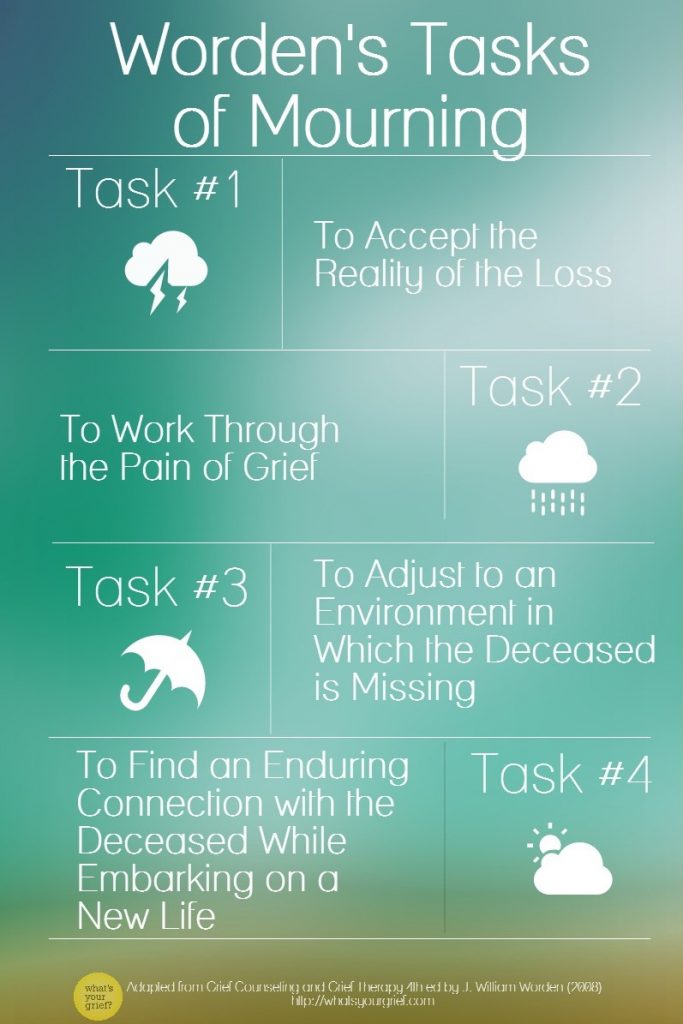
Task 1: Accept the reality of the loss
Even though you are aware that the person has died, you may not feel like you believe it. Accepting the reality of their death means “taking it in” with your whole being. This usually happens by viewing the body of the deceased, planning and attending a funeral/cremation, and preparing for a eulogy.
Task 2: Process your grief and pain
Grief is experienced emotionally, cognitively, physically, and spiritually. Some people talk about the death, others stay quiet and cry alone. Some keep themselves busy with work or a hobby. Some try to get close to the person by participating in the groups or activities the deceased was interested in. Everyone has different ways of processing their grief and pain.
Task 3: Adjust to the world without your loved one in it
Adjustments to this new world can include taking on new responsibilities, learning new skills, and adapting to your new identity without them. Examples are removing the deceased one’s phone number from your phone; having to get a job due to changes in your financial situation; making new travel plans, etc.
Task 4: Find a way to maintain a connection to the deceased while embarking on your own life
This task is not about forgetting the deceased but more so finding things in life that emotionally connect yourself to the deceased while still being about to move forward in life. It can take months to years to move through this task. Gradually, you create a balance between remembering the person who has died and living a full and meaningful life.
(OUR HOUSE Grief Support Center, n.d.)
